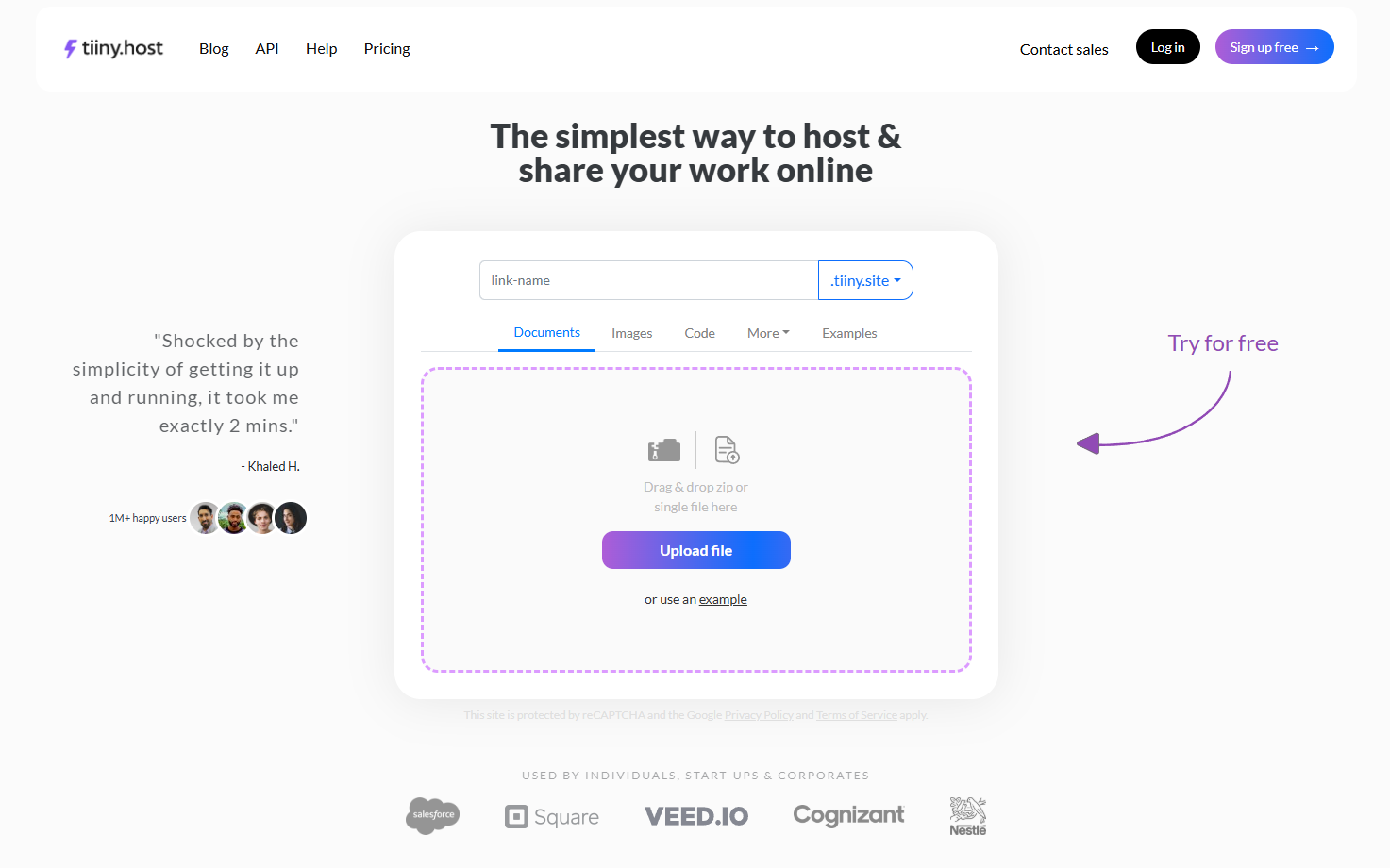- What Does it Mean to Self-Host a Website?
- Why Should You Self-Host A Website?
- Disadvantages of Self-Hosting
- What are some Alternatives to Self-hosting?
- How To Host Your Website: A Step-by-Step Guide
- Who Should Host Their Website?
- What is Self-Hosting? A Step-by-Step Guide to Hosting Your Website
Publishing your website is one of the first things you do when you have just created your portfolio, made the first moves for your startup idea, want to build a place where you can share your blogs, or maybe it’s a client project that needs to go live. The next part is hosting your website and getting it live to the targeted audience.
In this guide, we’ll walk you through everything you need to know about how you can self-host a website. We’ll also cover which tools can make hosting your website online easier and faster.
What Does it Mean to Self-Host a Website?
Self-hosting means you publish or host a website with everything you need and own. You are responsible for storing, managing, scaling and delivering the site’s files from your end rather than relying on the web hosting company. That means you decide the amount of storage needed, the uptime required for your website, the programming language for your app, and the type of security required. You are in charge of how and where your website is hosted.
Hosts like Wix, Squarespace, or all-in-one builders allow users to create websites using drag-and-drop features. However, you pay for services such as managing the server and other backend services, and there is much less customizability.
With this approach, you need to set up a server on your computer or a dedicated machine. You can install web server software like IIS, Apache, Nginx, or other tools. You will need to purchase a domain, get a static IP from your ISP, and then configure the environment to serve your website files.
Why Should You Self-Host A Website?
Control & Ownership
All parts of your project are in your hands. You decide how your site is stored, updated, and showcased. There is no vendor lock-in.
Flexibility
As everything is made from scratch, it gives you the flexibility of choosing the tools. You would be the one who decides if you want to choose a personal device or a dedicated machine to run your website. You can also choose the server type and the highest security for your site.
Cost Efficiency
With the proper setup, you can host on a budget. It is in your hands what tools and components you want to invest in.
Learning & Growth
If you are a developer, student, or just starting your development journey, you can learn as you go and have hands-on skills.
Disadvantages of Self-Hosting
While Self-hosting gives you the chance to understand the technology better and allows flexibility, there are some challenges you have to face.
Hidden Costs
While it is possible to self-host at lower prices, it might come with many concerns. If you want to make your website live to a larger audience, it needs to have high security, a professional setup, and uptime. Expenses like domains, electricity, SSL certificates, and cloud usage can contribute to a large cost.
Maintenance Issues
With self-hosting, the server is your own device, so you need to maintain its uptime. This might be okay for a personal testing project. Still, if it is for a website or public project, it would need uptime throughout the day, which can become problematic. The setup also needs a continuous internet connection. Network outages or hardware failures can take your site offline.
Security Issues
Running the infrastructure requires technical knowledge, making it difficult for beginners to configure and troubleshoot. You also need to take care of updates, patches, backups, firewalls, and much more. Forgetting these can leave your site vulnerable to attacks.
Scaling Challenges
If your site suddenly gets a spike in visitors. In that case, self-hosted setups may struggle to handle the traffic unless you’ve planned for scalability.
What are some Alternatives to Self-hosting?
We get it. Self-hosting can become troublesome for individuals who don’t want to invest heavily in the different services needed for self-hosting. If you are a business, rather than spending on a server and in-house machinery, you can spend it on building the product and setting up the backend.
There are many other types of hosting, too. For example, you can use Shared Hosting, which is beginner-friendly but has lower customization. You can choose VPS or Dedicated Hosting if you have larger audiences and need more dedicated resources.
Some services to consider are Cloud or Managed Hosting and hosting tools like Tiiny Host, GitHub Pages, WordPress, etc. In these, you can build and customize your application, and the resources are elastic and scalable.
How To Host Your Website: A Step-by-Step Guide
Let’s see how you can host your project quickly within a couple of minutes.
Step 1: Get Your Website Ready
The step before getting the website live is actually getting it ready. If you are just getting started, you can create a website with HTML, CSS and JavaScript. You can also create a dynamic website using PHP. It is also possible to find templates online and build a website.
It is also possible to host a website without even coding. You can use AI tools like Uizard to make your website or app designs, Claude and ChatGPT to assist you in coding, and apps like Cursor to build the project with just a prompt.
Recommended Read: 7 Helpful AI Coding Tools to Make Your Development Journey Easy
Once you are done creating your website, keep the assets and files in one place to help you further when taking your website live.
Step 2: Get a Domain Name
Your business should get a domain name, or even if it’s a portfolio, a domain name is a good investment for your website. The name of your website will become the identity of your business. You can also get a free domain name when you host with tools like Tiiny Host or WordPress. It is excellent for beginners, personal projects, or testing things out.
Step 3: Choose a Hosting Provider
Make a decision on how you want to self-host. Make sure you look for a hosting provider based on your requirements and the amount you want to spend while getting the project live.
Step 4: Host Your Website
Once you have picked the hosting service, it is time to Host. Here, we have chosen Tiiny Host because they have plans for everyone, from personal websites to blogs, freelancers, and even enterprises.
- Visit Tiiny.Host’s homepage
- Upload your website as a zip file
- Give a link-name to get a customized sub-domain, but you can connect a custom domain
- Sign up or log in and hit publish!

And your website is ready to be shared.
Step 5: Analyze and Iterate
Tiiny Host has built-in analytics that allow you to check the website’s analytics without connecting to any external application. You can track the analytics and find out what is working for you.
Upon that, you can change or iterate. It is good to update and change the items on your site to make the user experience better and push them to Tiiny Host. You can also connect with GitHub and directly push changes from your code editor.
Who Should Host Their Website?
A website is important for everyone, from students to businesses worldwide.
- Students: Students applying for university or internships can create and publish a student portfolio website showcasing their skills and experience over time.
- Professionals: Anyone seeking a job or finding out clients can also create a professional portfolio showing their journey so far, allowing employers to find you and understand your experience.
- Individuals with Projects: You can have personal or other projects you want to host and share with the world.
- Small Businesses: It is a good idea for small businesses or small-scale companies to create websites; it makes it easier for people to find them and understand their services.
What is Self-Hosting? A Step-by-Step Guide to Hosting Your Website
Do I need coding knowledge to self-host a website?
Not necessarily. Using a platform like Tiiny Host, you can upload exported website files without touching code. But if you want to run your own server, coding and server administration knowledge will help.
Can I host a website for free?
Yes. Some methods, like running a local server or hosting the website on Tiiny Host, are free or affordable.
Is self-hosting safe?
It can be if you manage updates, use firewalls, and enable HTTPS. Platforms like Tiiny Host or managed hosting providers are safer if you prefer not to handle security.
If I have a personal project, how should I host it?
It is a good idea to host small projects or personal websites. If you want to explore all components of hosting, you can try doing it on your own device. Otherwise, you can choose Tiiny Host and push code directly from IDE to Tiiny Host, it will allow you to test, and reiterate on the go.



